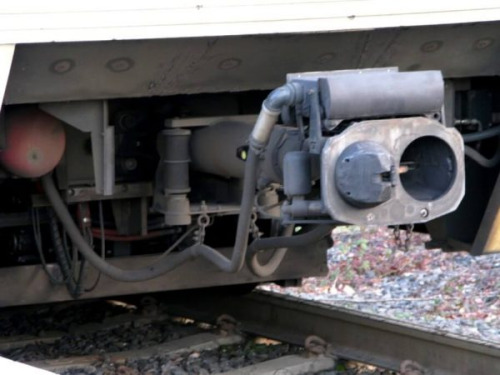Trains - HISTORY - Astonishing Facts About the Black Men and Women Responsible for America’s Railroad Systems
The American railroad systems has some astonishing facts in their history about Black Men and Women who have been responsible for building the railroad system.
by Earl of CruiseWidening my blog themes into more than cruising the seas and the history of, I am publishing an article that I have found on blackmattersus.
The American railroad systems had a dramatic history with ups and downs, stock crashes causing, and fights against fierce competitors on the road and in the air.
1.All Southern Railroads Built in the 1800s Were Built by Enslaved
Africans
The whole
southern network of railroads built in the enslavement period in America was
almost entirely constructed by enslaved Africans. Some railroads owned enslaved
people while others rented them from their owners. They also hired free Blacks.
All worked positions like brakemen and firemen, who either manually stopped
trains or stocked fire for energy.
2. Black Women Were Also Involved in Railroad Construction
Both women
and men alike were pushed to work in the dangerous and brutal railroad building
conditions. After construction on the tracks was complete, many still worked on
the railroad in smaller roles. There was little difference in the abilities of
Black women to work on the tracks. They were both expected to face treacherous
conditions.
3. Black Men Risked Their Lives Working as Brakemen to Manually
Stop Trains
Trains
originally had to physically be stopped by brakemen, who turned a wheel that
engaged the brakes on individual rail cars. The wheel was located on top of the
train car, and in the winter time, many brakemen fell between cars and were
crushed to death. This continued until the air brake was invented.
4. John Henry Was a Real Person
Historical
research found that the John Henry ballad was based on two different real
people. One was named John William Henry, a 20-year-old Black freeman born in
New Jersey. He went to Virginia to clean up battlefields after the Civil War.
Another was a John Henry who worked on and died at the Big Bend Tunnel at
Chesapeake and Ohio Railway.
5. Just as There Were Pullman Porters, Pullman Maids Existed, Too
George
Pullman of the Pullman Company invented the overnight sleeping train car in the
1800s. He employed Black men as porters and also hired Black women as maids.
Both porters and maids served white clients. Maids focused on white women’s
needs and white women with children in particular.
6. Poor Working Conditions and Salaries Led to the Brotherhood of
Sleeping Car Porters
Porters
worked long hours with small salaries and no job security. Most of their income
came from tips, and they had to pay for their uniforms, lodging and food.
Advocate A. Philip Randolph founded the Brotherhood of Sleeping Car Porters in
1925 to combat this. In 1937, union rights to organize were legalized and
Pullman reached a labor agreement with the BSCP.
7. John Henry Ballads Likely Originated as Songs for Railroad Workers in
the 1870s
Steel drivers
and other rail workers would sing work songs as they laid tracks. The tunes
later became more generalized as songs for chain gangs, prisons and other
workers. Later versions saw it transformed into folk, blues and protest songs
performed by singers like Leadbelly and Harry Belafonte.
8. The Railroad Boom in America Aided Escape Efforts of the Enslaved
Samuel
Ballton escaped his camp in April 1862 with a group of other enslaved Africans
along lines cut to lay track to the Richmond, Fredericksburg & Potomac
Railroad. They trailed it north, dodging the road master who hired them by
claiming they were there to work. The group later made it past Union lines and
met the Sixth Wisconsin infantry. Other Black laborers escaped in similar ways.
9. Granville T. Woods Had Numerous Patents on Mechanisms to Aid Railroads
Granville T.
Woods was a businessman, patent holder and an electrical and mechanical
inventor. Some of his patents included an electric transmission, air brake
features that improved safety, and telegraphy. Woods taught himself electrical
and mechanical engineering as he worked at railroad machine shops and steel
mills.
10. Whites Pushed Blacks Out of Rail Jobs When Air Brakes Came in
the Picture
After George
Westinghouse invented the automatic air brake and Woods made necessary safety
improvements to them, the need for brakemen diminished. Along with automatic
couplers, which attached rail cars on a train, these two features made rail
jobs more attractive to whites. It caused Blacks to lose these jobs to
white men in the early 20th century.
Technical developement is not only a reason for the unemployment of Black American people. Later those who succeeded got the same "treatment" to unemployment, when the technical development was the more automated.
But the Black people, working for the American Railway Systems, is a huge part of history most white people try to ignore, but it is there and everyone needs to acknowledge it.
But the Black people, working for the American Railway Systems, is a huge part of history most white people try to ignore, but it is there and everyone needs to acknowledge it.











Fantastic piece of history that should be taught in all grade
ReplyDeleteschools.